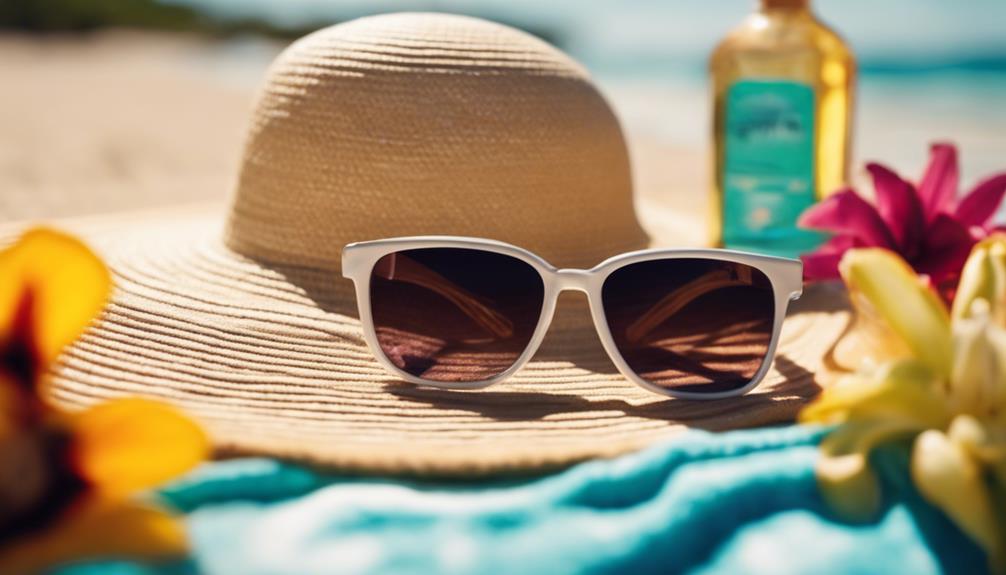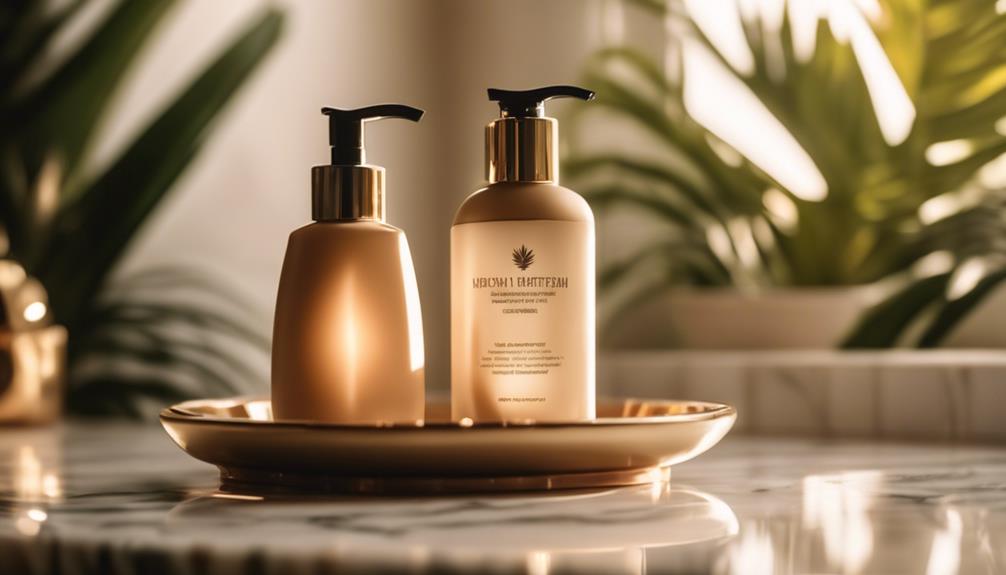Getting that perfect tan means knowing how long to stay in the tanning bed, so you won't overcook yourself! If you've got fair skin, start with just 1-3 minutes. Light beige? Try 2-4 minutes. For medium skin, stick with 4-8 minutes, while olive skin should aim for 4-9. If you rock dark brown skin, you can go for 4-10 minutes, but build up slowly to avoid looking like a cherry tomato! Remember, always wear your protective goggles and keep an eye on your skin's reactions. Want to learn about some safer alternatives? There's plenty to explore!
Key Takeaways
- Fair skin should start with 1-3 minutes in the tanning bed to minimize burn risk.
- Light beige skin can safely begin with sessions of 2-4 minutes for effective tanning.
- Medium skin types benefit from tanning durations of 4-8 minutes for optimal results.
- Olive skin is recommended to tan for 4-9 minutes, allowing gradual exposure.
Safe Tanning Principles
Safe tanning starts with a gradual increase in tanning bed durations tailored to your skin type to minimize the risk of burns. You wouldn't jump into a pool without checking the temperature first, right? The same goes for tanning!
Always wear protective eyewear—think of it as sunscreen for your eyes. Using a good tanning lotion is like giving your skin a drink of water, helping it stay hydrated while you achieve that golden glow.
Listening to your skin is key; if it starts feeling hot or itchy, it's time to dial it back. And hey, if you're unsure, chatting with a tanning pro can help you find the perfect rhythm for your tanning journey.
Happy tanning!
Identifying Skin Types

Understanding your skin type is essential for determining the right tanning bed duration and achieving an even, beautiful tan. Knowing whether you have dry, oily, combination, or sensitive skin will help you choose the appropriate tanning bed duration to avoid burning or damaging your skin. If you have sensitive or fair skin, it is best to start with shorter tanning sessions and gradually increase the duration to avoid sunburn. Understanding your skin type will also help you maximize your tanning bed time by using the right moisturizers and tanning lotions to enhance your tan without overexposing your skin to harmful UV rays.
Think of your skin like a delicate flower—some need just a sprinkle of water, while others thrive with a bit more!
If you're fair-skinned, you'll want to be super careful, starting with just a few minutes.
Light beige? A tad longer, but still gentle.
Medium skin can handle a bit more time, but always listen to your skin!
Olive skin? You're in for some fun, but don't go overboard!
Darker skin types can soak up more rays, yet slow and steady wins the race.
Recommended Tanning Durations

Knowing the right tanning durations for your skin type can help you achieve that desired glow while minimizing the risk of burns. Custom tanning schedules can be determined based on your skin’s melanin levels and individual sensitivity to UV rays. It’s important to start with shorter sessions, especially for those with fair skin, and gradually increase the time as your skin becomes more accustomed to tanning. By working with a professional or doing thorough research, you can create a personalized tanning plan that suits your skin type and minimizes the potential for damage.
If you've got fair skin, start with just 1-3 minutes.
Light beige skin? Try 2-4 minutes.
For medium skin, 4-8 minutes is your sweet spot.
Olive skin can handle 4-9 minutes, and if you're rocking dark brown skin, start with 4-10 minutes.
It's like a dance with the sun; you gotta ease into it! Always pay attention to how your skin reacts, and don't rush it.
Remember, gradual increases are key to avoiding the lobster look!
Consistency is your friend, so stick to a schedule that works for you, and your glowing tan will thank you!
Alternatives to Tanning Beds

If you're looking for a way to achieve that sun-kissed glow without the risks of tanning beds, there are plenty of alternatives to contemplate. You can try airbrush tanning, self-tanning lotions, or even UV-free sprays. Each option offers a way to get your glow on while keeping your skin safe.
Here's a quick comparison to help you decide:
| Method | Pros |
|---|---|
| Airbrush Tanning | Professional finish, fast |
| Self-Tanning Lotion | Easy to apply, customizable |
| UV-Free Sprays | Quick-drying, no sun exposure |
Tanning Bed Safety Practices

To maximize safety during tanning bed sessions, always prioritize proper equipment use and hygiene practices. Think of it like preparing for a fun adventure—safety is your trusty sidekick!
Here are some essential tips to keep in mind:
- Always wear protective goggles to shield your eyes.
- Clean the tanning bed before and after each use.
- Use a high-quality tanning lotion for hydration.
- Limit your session time, especially if you're a beginner.
Frequently Asked Questions
How Often Should I Use a Tanning Bed for Optimal Results?
To achieve ideal results, you should use a tanning bed 2-3 times a week. Monitor your skin's response closely and adjust session durations gradually to avoid burns and guarantee safe tanning practices.
Can I Tan if I Have a Sunburn?
Can you really tan with a sunburn? It's best to wait until your skin heals. Tanning over a burn can worsen damage and prolong discomfort. Prioritize healing to enjoy safer, healthier tanning experiences later.
What Should I Do if I Experience Tanning Bed Burns?
If you experience tanning bed burns, immediately cool your skin with aloe vera or cold compresses. Avoid further tanning, hydrate, and monitor for severe reactions. If needed, consult a healthcare professional for appropriate treatment.
Are There Any Skincare Products to Avoid Before Tanning?
Did you know that 30% of people use products that can hinder tanning results? Avoid heavy moisturizers, makeup, and sunscreen before tanning, as they can block UV rays and reduce the effectiveness of your session.
How Can I Maintain My Tan After Using a Tanning Bed?
To maintain your tan after using a tanning bed, hydrate your skin daily, use a tan extender lotion, avoid exfoliating products, and limit hot showers. Consistency in care will help your tan last longer.
Conclusion
So, there you have it! With the right approach, you can rock that sun-kissed glow without risking your skin.
Remember, it's all about knowing your skin type, timing your sessions, and keeping safety first.
Think of tanning like cooking—you wouldn't leave a pie in the oven too long, right?
So keep an eye on your skin, use protective gear, and don't hesitate to ask for help.
Get ready to shine, and enjoy your tanning journey!









